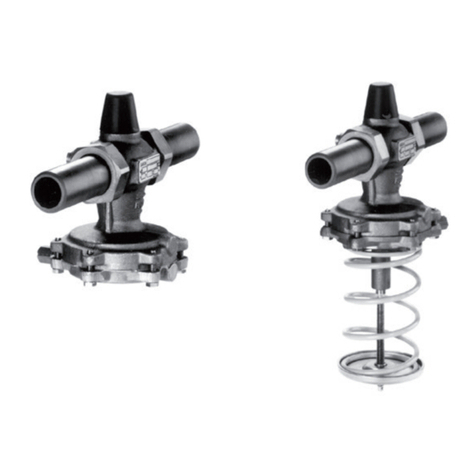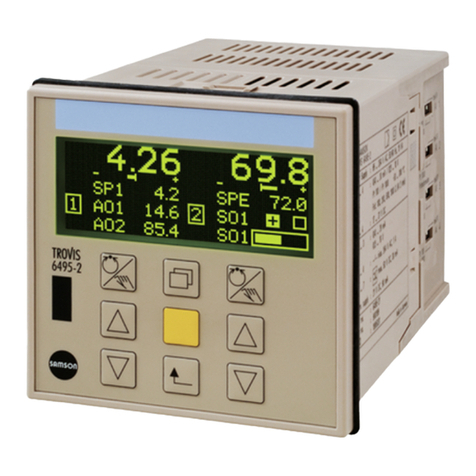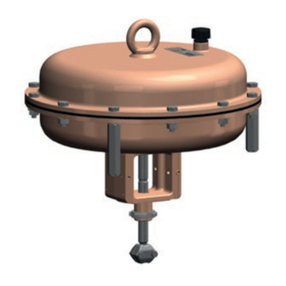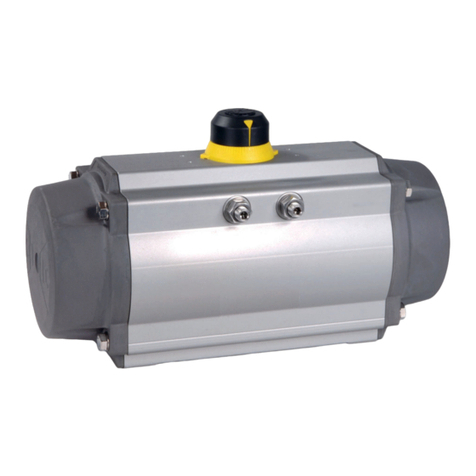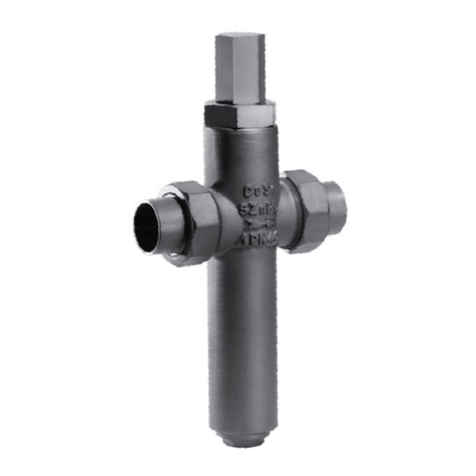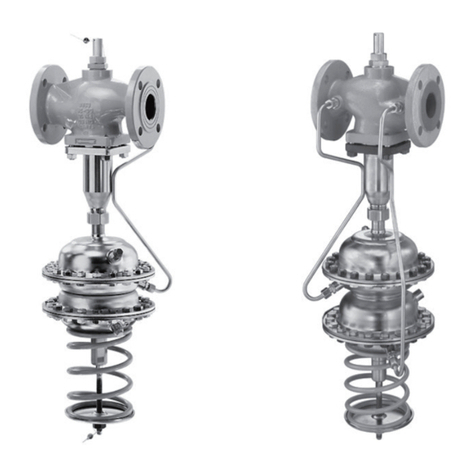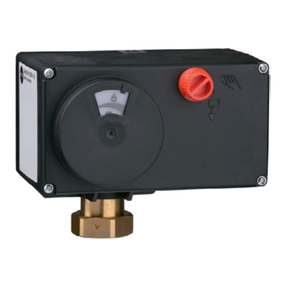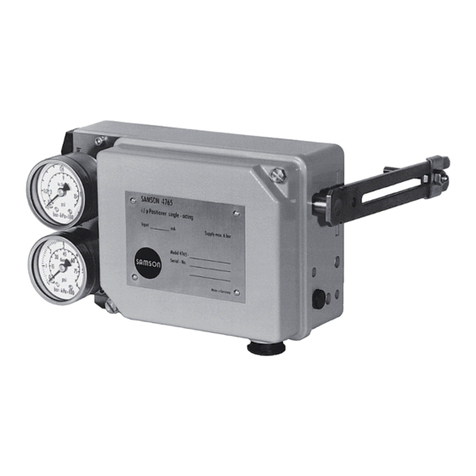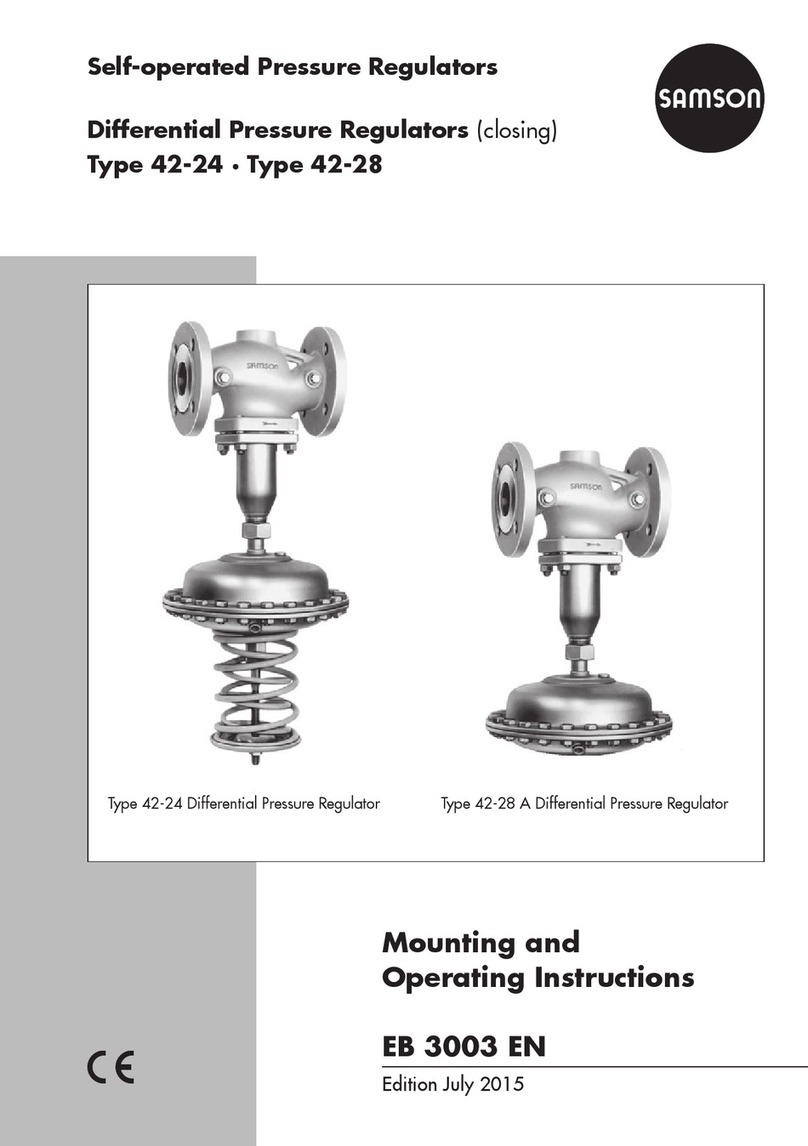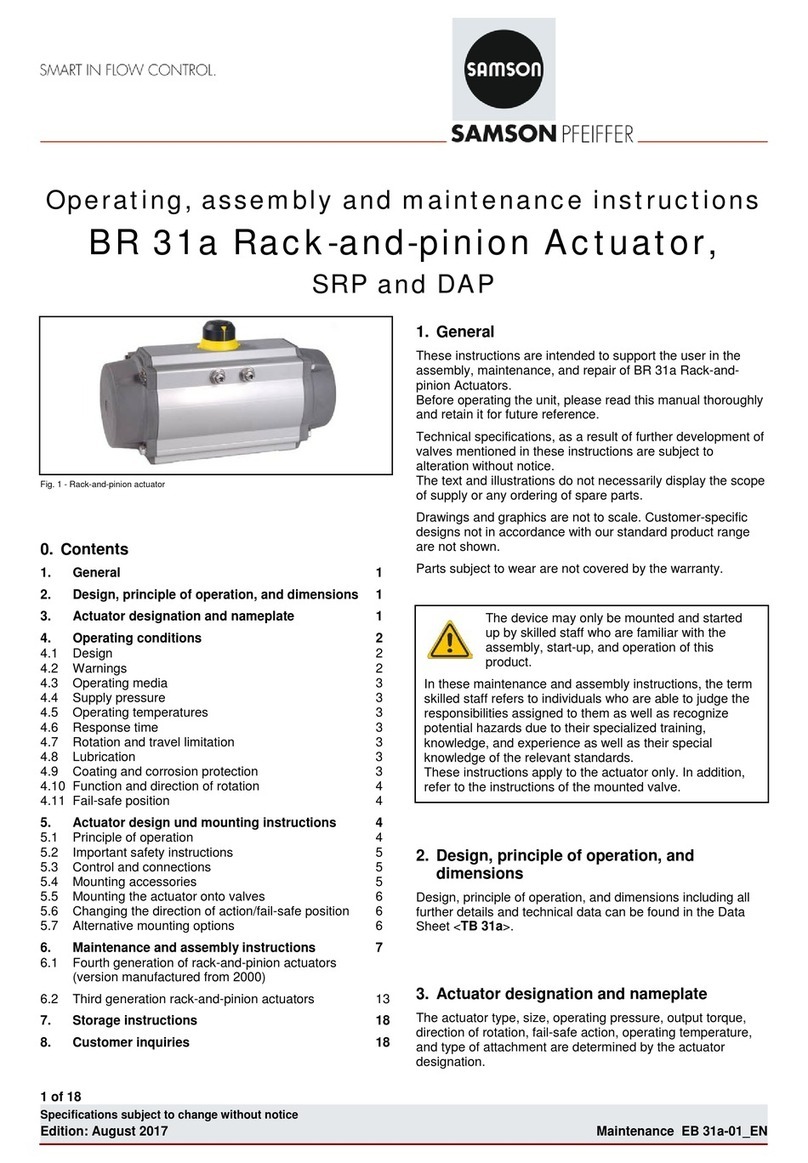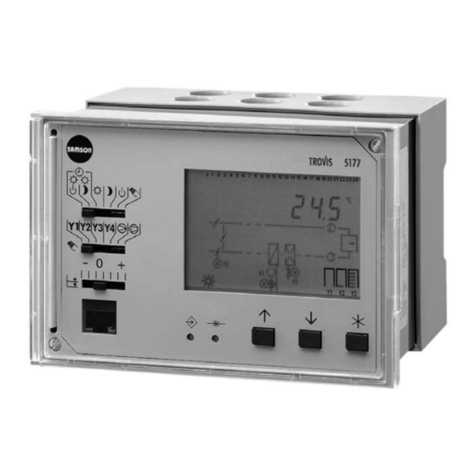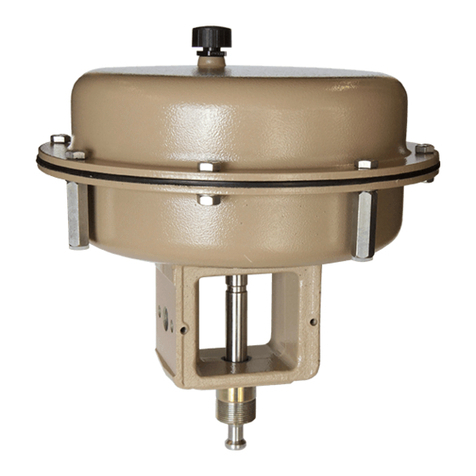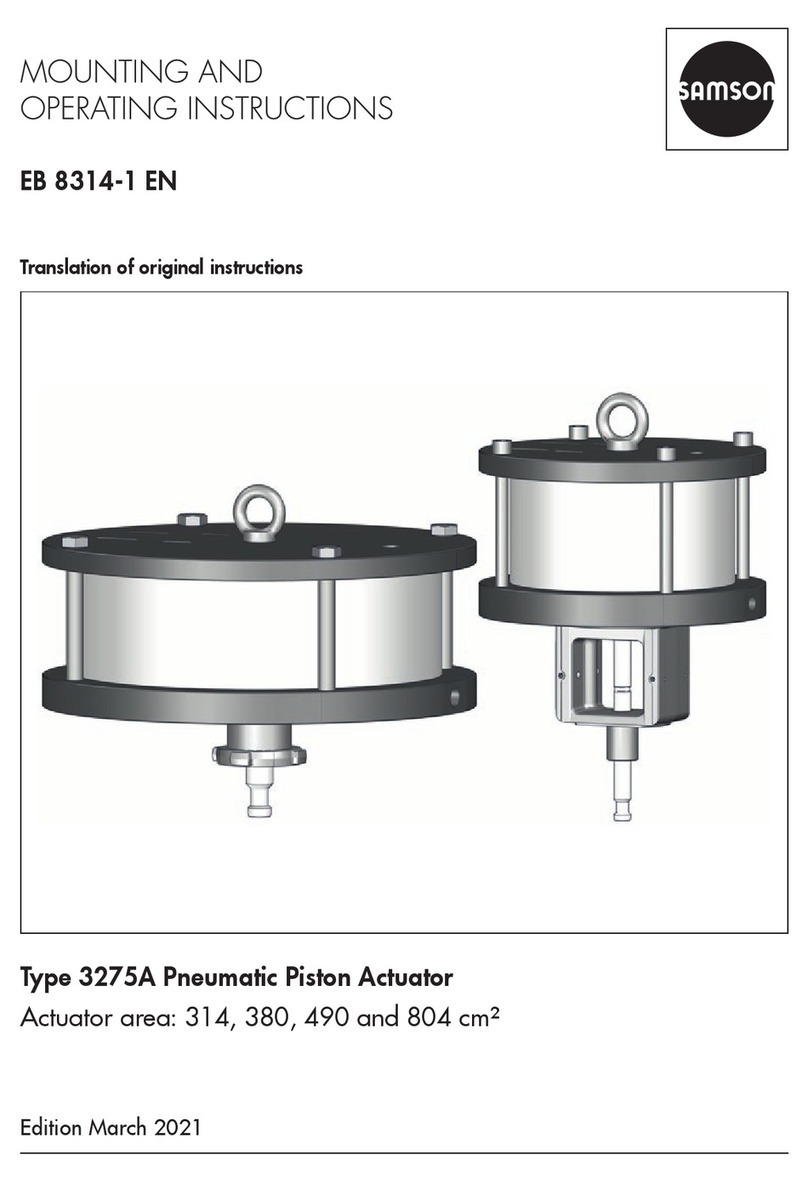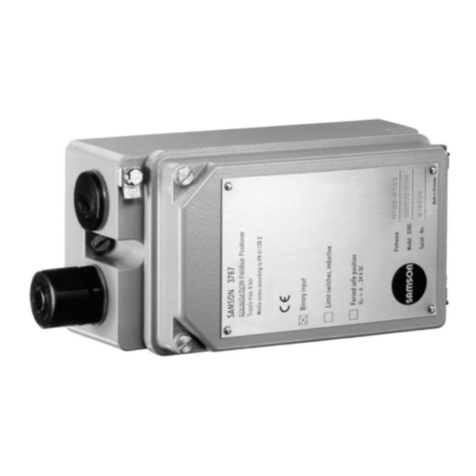
Contents
EB2111/2121/2123 EN
1 Safety instructions and measures ................................................................1-1
1.1 Notes on possible severe personal injury ......................................................1-5
1.2 Notes on possible personal injury ................................................................1-5
1.3 Notes on possible property damage.............................................................1-7
2 Markings on the device ..............................................................................2-1
2.1 Valve nameplate .........................................................................................2-1
2.2 Nameplate of the control thermostat .............................................................2-2
2.3 Location of the nameplates ..........................................................................2-2
2.4 Materialidenticationnumber .....................................................................2-2
2.4.1 Type2111andType2422Valve .................................................................2-2
2.4.2 Types2231to2235ControlThermostat .......................................................2-2
3 Design and principle of operation ...............................................................3-1
3.1 Accessories ................................................................................................3-3
3.2 Additionalttings........................................................................................3-5
3.3 Technical data ............................................................................................3-6
4 Shipment and on-site transport ...................................................................4-1
4.1 Accepting the delivered goods .....................................................................4-1
4.2 Removing the packaging from the regulator ..................................................4-1
4.3 Transporting and lifting the regulator............................................................4-2
4.3.1 Transporting the regulator............................................................................4-2
4.3.2 Lifting the regulator.....................................................................................4-3
4.4 Storing the regulator ...................................................................................4-4
5 Installation .................................................................................................5-1
5.1 Installation conditions..................................................................................5-1
5.2 Preparation for installation...........................................................................5-4
5.3 Installation..................................................................................................5-4
5.4 Installing the regulator.................................................................................5-6
5.4.1 Installing the valve.......................................................................................5-6
5.4.2 Installing the control thermostat ....................................................................5-7
5.4.3 Installing the reversing device.......................................................................5-7
5.5 Cleaningthepipeline ..................................................................................5-8
5.6 Testing the regulator....................................................................................5-8
5.6.1 Leak test.....................................................................................................5-9
5.6.2 Pressure test..............................................................................................5-10
5.6.3 Filling the plant.........................................................................................5-11
5.7 Insulation .................................................................................................5-11
5.8 Mounting accessories ................................................................................5-11
